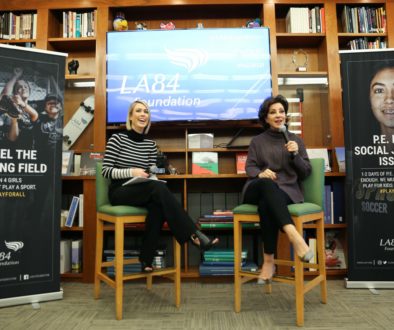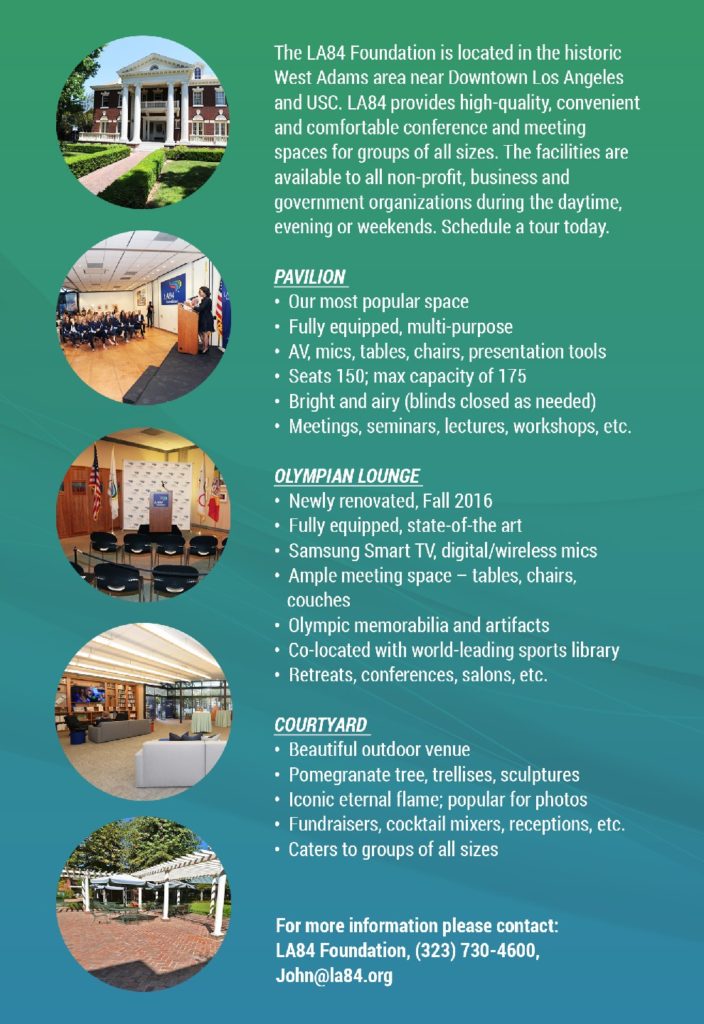SL Interview: “Run to the East” Director Henry Lu
Director Henry Lu cut his creative teeth working for Wieden + Kennedy, the advertising agency best known for its groundbreaking Nike commercials. But when he read an article about high school runners living on Native American reservations in the Southwest, he decided it was time to make a feature-length documentary film.
Distance running has long been a traditional pursuit among Indians in North America. The lineage of elite runners extends from Deerfoot, the Seneca star from the 19th century; to Canada’s Tom Longboat, the 1907 Boston Marathon winner; to Louis Tewanima, the Hopi silver medalist in the 10,000 at the 1912 Stockholm Olympics; to Billy Mills, the surprise winner in the 10,000 at the 1964 Tokyo Olympics.
Today, the need for Native American youth to exercise has taken on added urgency. Running, Lu notes, is an inexpensive, accessible way to help teens deal with the myriad physical and mental health challenges they face on the reservation, including high rates of Type 2 diabetes and suicide. Running can also lead to a college scholarship, thus providing the means for kids to gain career and life direction.
In “Run to the East,” Lu follows three Native American runners as they navigate school, sports, family and life on the reservation. Their journey to gain the all-important college scholarship is at once inspiring and sobering. The same can be said for Lu’s heartfelt film.
SportsLetter spoke to Lu while he was in Los Angeles to screen the film at the 8th annual Red Nation Film Festival.
— David Davis
SportsLetter: “Run to the East” is your first feature-length documentary. What’s your background in sports and film?
Henry Lu: I got my start working at Wieden + Kennedy in Portland, Ore. I worked on advertising campaigns for Nike for about seven years. I did a lot of basketball and a bunch of stuff with Tiger Woods. I also did their “anthems” campaigns, including a commercial called “I Can,” with the song “Bittersweet Sympathy.”
I’ve done a couple of short films that have played at festivals, but this documentary was really my first foray into something long-form. I’ve always had that documentary voice in my work, and that search for some kind of truth, but this was an amazing learning experience for me and my crew. We started working on this in February 2008, and I think we’re still learning from it.
SL: You’ve mentioned that the genesis for the film was a New York Times article about the challenges faced by Native American high school runners. What struck you about that article that made you want to make “Run to the East”?
HL: At the time, there were an amazing number of documentaries about the situation in Darfur. And yet, here in our own backyard is this Native American team that’s won all these national and cross-country titles, and no one knows anything about them. I couldn’t believe that these kids were doing what they were doing with what they have, and I felt it would be interesting to meet these kids and see what comes out of it. I didn’t know if it would be just a short film or what it was going to be. The angle was, “Wow, these kids are pretty amazing.”
We were fortunate enough to meet with Joe Spring, the writer of the article, and he took us to meet with Wings of America. From Wings of America, we were able to gain an entrée into that world.
SL: How would you describe the Wings of America programs for Native American youth?
HL: Wings of America has been around for about 20 years. Their main goal is to teach Native American kids to be proud of who they are. They teach the kids to recognize that you have choices in life: You’re going to be presented with a lot of bad choices, but hopefully you can find the right ones. And, one of those is running. Running can help you stay focused and stay on track. Running can take you places. It can take you all the way to college.
SL: How did you decide to focus on the three high school runners in the documentary: Dillon Shije, Chantel “Tails” Hunt and Thomas Martinez?
HL: Dillon and Tails were in the New York Times article, so we knew about them. We met with a bunch of other runners, but we felt that Dillon and Tails were very interesting. They had a certain something to them – a certain aptitude and desire and ambition – that separated them from the others.
From Tails, we met Thomas. His life is at the other end of the spectrum in terms of family support. It’s amazing that he was able to do what he was doing because he had virtually no support from his family. When I talk to Thomas, even to this day, I never know if he’s talking to his dad and his aunties or not. They don’t even know where he is half the time.
SL: You show the kids’ lives on the reservation, herding sheep and hunting for rabbits and hanging out at home with their families. What was your initial impression of life on the reservation?
HL: Well, it took a long time to get to the point where they invited us in to their homes. It wasn’t like we showed up on their doorstep and then they said, “Come on in. Film our lives.” It took us a couple of months of just visiting them and hanging out with them to give them a sense of what we were trying to do. To gain that trust – that was the most important element. We were able to get there, but that was the hardest part of the filming process. It was a continual exercise in trust building. Even up until the last few months, there were moments when Dillon and his family were unsure whether they should be part of this or not.
With Dillon and Tails, when we entered their homes, it was really cozy. They didn’t have a lot, but they did a lot with it. Of course, there are deep pockets of poverty on the reservation. We show that, the dire living conditions, in the film. That was eye-opening. But, it was also something we didn’t want to dwell on. A lot of the tone of the film lies in the subtleties, in us taking the viewer on a journey, much like the journey that we had, to be able to experience life on a reservation. If you’ve never been there before, you get to see where some of these folks live and how they live.
SL: What challenges do Native American kids face that are unique in the United States?
HL: That’s a big topic. I would say that the most significant thing is that they are seriously under-funded and under-served in terms of education. That’s the number-one thing. There is so much displacement of teachers – they don’t stick around. In the time that we were filming at Navajo Pine [the high school attended by Tails and Thomas], there were three principals that we had to deal with in under two years. Tails is in the school’s “gifted program,” but her mother, Dolores, admits that it doesn’t amount to anything. So, there’s no consistency, there’s no desire to really educate people. They’re just trying to push the kids through the system and hope that they’ll get through high school. There’s no added ambition or inspiration for them to go on to college. One of the teachers we interviewed in the film points out that, of the maybe 15 kids who actually make it to college, only two will succeed. Those are incredible odds. It just shouldn’t be this way compared to the rest of America.
SL: The third runner, Dillon, went to a private school in Albuquerque. How would you describe the differences between his high school experience and that of Tails and Thomas?
HL: First and foremost, this was a choice that Dillon’s parents made. They didn’t know if Dillon had the potential as a runner to make it to the Olympics, but they realized that the only way to get him there is to first get him to a good high school, which would get him to a good college program. And then, from there, they’ll see what happens. To do that, they made tremendous sacrifices, not just driving an hour each way in the morning, but financially. It’s incredibly expensive to send Dillon to Sandia Prep, where they prepare the students to go on to higher education. One hundred percent of the kids at Sandia Prep go on to college.
That’s the most telling difference. It’s night and day compared to Tails’ and Thomas’ high school, where they’re hoping you make it to graduation and that’s it. Sure, it’s great that they’re teaching the kids their native tongue, but there’s no forward thinking, there’s no inspiring the kids to do more. It’s the basics. These kids could be bright, but they’re just not taught. They have maybe four or five shared computers for the whole school, whereas at Dillon’s school they probably have hundreds. There’s an inequality, and that was something we wanted to illustrate in the film. Something is wrong with the system.
SL: What can running contribute to their lives?
HL: The overarching theme of the film is, running is this simple exercise and it can help you get somewhere. Running is something that Native American kids were all taught as young children because it’s part of their spiritual beliefs. So, running is this way of going back to your roots and your heritage and not forgetting who you are. In addition to the history, running teaches you discipline, it teaches you to work hard. There’s a work ethic that is instilled in you, and it can give you the blueprint for the rest of your life if you subscribe to it. In doing so, you may be able to change who you are.
On a health level, there’s a huge incidence of Type 2 diabetes among Native Americans. If you look at their diet and look at what’s being sold in the supermarkets on the reservations, they have shelves and shelves of potato chips and pop and processed foods. Those are cheap, while the fresh veggies and fruit are very expensive.
SL: How difficult is it to motivate Native youth to get involved in programs that encourage running?
HL: It’s really difficult. It’s like a big hill that they have to climb. There are programs out there, like the ones from Wings of America and Just Move It, that are trying to get kids involved and teach the community about this. But just because the kids run once on their running day at school doesn’t mean that they’re going to continue to do so. It’s something that they’ve got to want to do themselves. Even beyond New Mexico, out to the reservations in the Dakotas like Rosebud and Pine Ridge, they’re not thinking about diabetes or running. They’re just trying to survive. They can barely get by. Their survival is just day-to-day.
SL: Is running the only sports option for Native American youth?
HL: Basketball is the number-one sport on Native American reservations, but less than one percent will actually make it to college playing basketball. Chantel and Dillon were both basketball players before they turned to running. Beyond track and basketball there’s not many options. The greatest thing about running is that all you really need is a pair of shoes. So, there’s a simplicity to that and an accessibility. More kids will get college scholarships through track-and-field than they will from any other sport.
SL: The three runners that you profile received college scholarships, but as you point out in the film the dropout rate among Native American college students is the highest among all groups. Why is the dropout rate so high?
HL: I think it’s a couple of things. One is the alienation – just being away from the reservation and not being surrounded by your family. They sometimes don’t know how to take care of things away from home – even simple things, like knowing when to eat or what books to buy. The second thing goes back to the lack of preparation during high school. Oftentimes, the kids are not ready for college. It’s like they’re jumping into a fast-moving stream and they can’t keep up. There’s a huge push now to get kids to the junior college level for the first year or two, just so they can get acclimated to the work flow and what’s expected of them.
SL: Can you bring us up to date about the three runners who you follow in the film?
HL: Dillon is still running for the University of Colorado. Tails has transferred from the University of Utah and is now at Northern Arizona in Flagstaff. Thomas was given a scholarship to Eastern New Mexico, but he’s fallen off a bit. He left there after an argument with the coach. He next went to the University of New Mexico, but left there last fall after not making the cross-country team. Now he’s working in Albuquerque and trying to figure things out.
SL: Using sports as a stepping-stone to get a college scholarship has been explored in several documentary films, starting with “Hoop Dreams.” Were there certain films that you viewed as a model for “Run to the East?”
HL: We wanted to tell a story about Native Americans kids told through the kids themselves, letting them tell their stories. That never happens. I feel that other filmmakers don’t have that same confidence that kids can tell their own story. I think that sets us apart, and I think that we succeeded. “Hoop Dreams,” of course, is on a very high pedestal in terms of commitment and in terms of drama.
There haven’t been any Native American stories that espouse the positive. Everything that you see focuses on the negative and reinforces all the negative stereotypes. In our film, it’s there – you feel it and you see it – but we don’t dwell on the negatives. We don’t underline the despair and the drama. Now, would it have been a more exciting film if one of our kids had fallen off and gone into drinking or drugs? Sure, but is that the film we wanted to tell?
SL: Director Jonathan Hock just produced “Off the Rez,” about a Native American high school basketball player. Were you worried that his film would overshadow your film?
HL: We’ve got a very different film than “Off the Rez.” Ours is a quiet film. It doesn’t revolve around a big sport like basketball. Its budget is way, way less than theirs. But good for Jonathan – it’s good that someone else is telling a contemporary Native American story. And, if someone is interested in that film, maybe they’ll be interested in ours.
SL: What surprised you most during the making of the film?
HL: The most pleasant surprise was to see how rooted in family so many Native Americans are. There was such a strong sense of family, not only with Dillon and Tails, but with the other Native American families who we spoke with and met with. I did not know that was there. In fact, it helped me re-evaluate my relationship with my family. It’s funny how these things happen.
SL: How have you been getting word out about the film?
HL: Our plan all along is to bring the film to the reservation so that Native American kids and families can see it. We probably had about a dozen screenings through the two-day summer camps run by Wings of America, where they go to different reservation towns and teach the kids about nutrition and Type 2 diabetes and respecting one’s culture. They advocate choosing a healthy lifestyle and staying away from drinking and drugs.
Dillon, Tails and Thomas all worked at the camps this year. We bought them a projector and a sound system that they took on the road to show the film at the camps. To me, that was huge. To me, that’s where our audience is.
SL: What’s next for the film?
HL: We’re up for a few more festivals. That will round it out to about 13, 14 festivals this year. We’re still trying to find a distributor so that we can get the film out in DVD form to local schools and families on the reservation and to Indian Health Services.
SportsLetter also spoke briefly to Chantel Hunt, one of the three subjects of “Run to the East,” when she was in Los Angeles for the screening of the film at the Red Nation Film Festival.
— David Davis
SportsLetter: What is the connection between running and Native American culture?
Chantel Hunt: There’s a deep tradition of running among Native Americans. We want to help preserve that. Today, there’s a lot of Native kids with the talent to run at the collegiate level. Maybe not always at a D-I program, but at the junior college or D-II level.
SL: What are some of the challenges that Native American kids face on the reservation?
CH: There’s a lot of obstacles: domestic violence, alcoholism, teen pregnancy, lack of good jobs. We’re trying to work on building self-confidence and self-esteem, so that they can feel that they can do it. We want to let them know that they don’t have to be stuck, that dreams are possible.
SL: What does running mean to you?
CH: Running is a teacher. Running teaches me about life, that life has ups and downs. You can either give up or keep moving on. It’s also great exercise and a great stress reliever.
SL: How has that changed?
CH: Well, I’m no longer running competitively. Right now, running for me is just for fun. It’s a way to stay fit and maintain a healthy lifestyle. Long-term, in the future, maybe I’ll start to run competitively again.
SL: Now that you’re in college, what’s it like to watch “Run to the East” and see yourself in high school?
CH: Every time I watch it, I travel through time and re-live my running career in high school. I can’t believe that someone filmed my life during this time. It’s pretty awesome.




